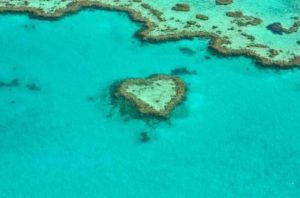
The Reef and Rainforest Research Centre in Australia and the tourism industry have proposed a $9 million project to save coral bleaching in the Great Barrier Reef by pumping cold water onto a handful of critical reef sites.
The plan has been submitted to the federal government in the country. According to the proponents of this project, this measure could prevent localized bleaching to valuable parts of six reefs near Cairns and Port Douglas.
The plan suggests using low-energy technology to push adjacent cold water from a depth of about 40 meters to the surface to prevent bleaching caused by global warming-induced rises in sea surface temperatures.
According to Sheriden Morris, managing director of the Reef and Rainforest Research Centre, the aim of this pilot project is to prevent the loss of coral species by staving off bleaching in some specific areas.
“It’s very localized,” Morris told The Huffington Post.
“This isn’t going to save the reef. All the efforts to improve climate change need to happen at the same time. This is just protecting some of those complex areas.”
Morris told Guardian Australia: “With the amount of bleaching that we currently have, the reef is going to change, that will affect the number of species that actually survive.”
“While this is highly localised, it may have the benefit of maintaining some complex communities in the face of some of the pressures that the reef is facing.”
Bleaching due to high sea surface temperatures is a catastrophic event for coral reefs. Corals can die as abnormal heat makes them expel their symbiotic algae. Sea surface temperatures are now so high across much of the tropics that many reefs are suffering severe bleaching for consecutive fourth year. Many divers in Australia have already reported new bleaching in the northern part of the Great Barrier Reef. Natural history film-maker Biopixel released a video showing new bleaching on the reef. The Great Barrier Reef Marine Park Authority has also requested visitors to report any signs of bleaching after a second year of unusually high water temperatures.
In 2016, the sea surface temperatures on the Great Barrier Reef were the hottest on record in the months of February, March and April. As a result, the largest ever coral die-off on the Great Barrier Reef was recorded, with almost two-thirds of corals dying in the 700 kilometres north of Port Douglas in far north Queensland.
In February this year, a new study carried out by researchers from the University of Melbourne suggested that the temperatures that caused distressing coral bleaching on the Great Barrier Reef in 2016 could likely become a norm by 2050 unless steps are taken to cut greenhouse gas emissions quickly.
Dr Andrew King, a climate scientist from the University of Melbourne who led the research said that temperatures like March 2016 could likely to become very common by the 2030s and 2040s if emissions are not cut significantly and quickly.
In this study, Dr King ran several climate models under a high-emissions scenario and low-emissions scenario, and found that high water temperatures are likely to occur more frequently if emissions are not curbed quickly and significantly. The study also revealed that even under reduced-emissions scenario, the high water temperatures would occur as often as every second year.